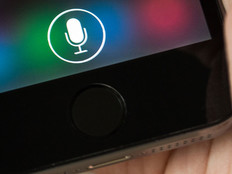Eye-Pleasing Upgrade
With the release of the BlackJack II, Samsung has cleared up a number of issues (including battery life) and has added enough spiffy new features in the design of its smartphone to compel current BlackJack users to make the switch.
Advantages
The second-generation BlackJack is about the same size as its predecessor, but the changes are all in the right direction. It’s one-tenth of an inch thinner (4.4 inches by 2.3 inches by 0.4 inches) but weighs the same (3.5 ounces). It sports a bright 2.4-inch, 320x240 pixel 65K TFT color screen. The screen is not touch-enabled, which for some folks is a preference: This typically leads to a thinner, lighter device that is less prone to accidental clicks. The grip has improved as well — not quite the soft rubber feel of say, a T-Mobile Dash, but it does fit well in my hand, and there’s little chance of slippage.
Although the online specifications for the BlackJack II do not list it, the device I reviewed had Mobile Office instead of the Picsel Viewer. Not that Picsel is all that bad, but Mobile Office a nice improvement if you need to read a document or spreadsheet while on the go. Minor edits or changes to documents aren’t hard to make, but anything more than that you’ll want to save for your notebook.
The BlackJack II also includes a 2.0 Megapixel camera and a rudimentary Global Positioning System tools. I used the camera to take quick shots of a remote office network closet, then sent them off to my supervisor (so we could groan together about the lack of cable routing). The GPS application works in a pinch when you’ve lost your way, but I prefer using a formal device or printing maps ahead of time to bring with me.
If you’re on the phone as much as I am, you’re also a wireless headset fan, and will be glad to know that Blackjack II includes Bluetooth 2.0. I had some initial trouble pairing up my Jabra BT8040 earpiece, but quickly got by that and it’s worked wonderfully ever since.
Why It Works for IT
Samsung has included the Windows Mobile 6 operating system with the BlackJack II. Mobile 6 builds nicely on Microsoft’s successful Windows Mobile 5, improving the user experience, management options, security features and enhanced Mobile Outlook interface. And when paired with Microsoft Exchange 2003 SP2 or 2007, you still get direct push and access to your company’s global address book, which is where I noticed the biggest improvement: Selecting message recipients required fewer clicks (and thus less effort on my part) when sending e-mail messages.
More than ever, security of personal digital assistants and smartphones is on every IT administrator’s mind. Complex policies can be developed (especially in Exchange 2007 using Microsoft Mobile Device Manager) that enforce time-outs, PIN length and rotation (which requires the user to log in to read stored data). If a device is lost or compromised, a remote wipe can be initiated from the server. Windows Mobile 6 also includes 128- and 256-bit Advanced Encrypted Standard encryption to protect data on storage cards.
Battery life — a common user complaint, especially when the device was in Direct Push mode for e-mail — has improved considerably in the BlackJack II. For me it was not an issue. I could leave Direct Push and Bluetooth on and talk for an hour or so a day, then recharge once every two or three days. The only issue I had was with the charge time. It seemed to take 3 to 4 hours to completely charge the device — not an issue, of course, if you charge it overnight.
Disadvantages
To really get the most bang for the buck in a corporate network, you’ll want to back any Windows-based smartphone with Microsoft Exchange 2003 SP2 or (preferably) 2007, and the BlackJack II is no exception. Most organizations are beyond Exchange 2003 and have migrated to 2007, but if yours hasn’t, you’ll be missing out. There have been great strides (particularly in security policies) in Exchange 2007; without it, you won’t have many of the features discussed and will need to use third-party software to bridge the gap.
The BlackJack II does not include Wi-Fi support. Some folks would love to hook into their organization’s unified communication platform via Wi-Fi when they get to the office, but for most users this isn’t an issue. What’s more, I’ve often found that Wi-Fi, in addition to being a security risk, takes a toll on a smartphone’s battery.
Samsung has also added a new jog wheel (a loosely bound disc with a push button in the center) to the navigation. Spinning the wheel lets you scroll through a document or a browser page — great in theory, but in practice I found the wheel’s sensitivity lacking. A satisfactory scroll required dozens of revolutions, and the looseness of the wheel was annoying. That said, the jog wheel might just be a love-it-or-hate-it feature; once you get your thumbs on one, you might never let it rest.
CDW PRICE: Call for pricing & activation








